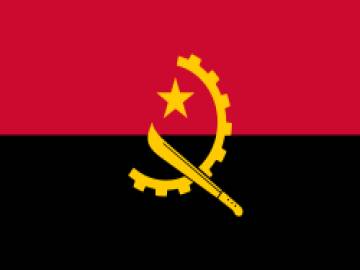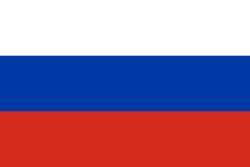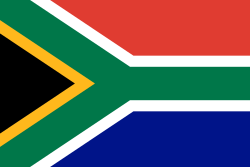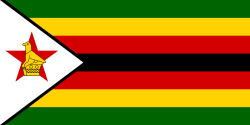Top 8 Countries With The Highest Diamond Reserves In The World

Diamonds are among the most valuable and sought-after gemstones in the world. These precious stones are not only beautiful but also have many industrial uses. Countries with diamond reserves have a significant advantage, as they can generate wealth through mining and exporting them.
Here are the top eight countries with the highest diamond reserves:
Countries With The Highest Diamond Reserves In The World 2024
- Russia
- Botswana
- Congo
- Australia
- Canada
- Angola
- South Africa
- Zimbabwe
1. Russia

Russia is the largest producer of diamonds in the world, accounting for around one-third of global production. The country's diamond reserves are estimated to be around 650 million carats, making it the largest diamond reserve holder globally.
Russia's diamond industry is controlled by Alrosa, a state-owned company that operates mines in Siberia and the Russian Far East. The company produces around 95% of Russia's diamonds and is one of the largest diamond producers globally.
2. Botswana

Botswana is one of the largest diamond producers globally and the second-largest diamond reserve holder, with an estimated 290 million carats of diamond reserves. The country's diamond industry is a joint venture between the government and De Beers, the world's largest diamond company.
READ ALSO » Top 7 Countries With The Highest Gold Reserves In The World
Botswana's diamond industry accounts for around 80% of the country's export revenue and has helped the country become one of the fastest-growing economies in the world. The government of Botswana has used its diamond revenues to invest in education, health, and infrastructure, among other things.
3. Congo

The Democratic Republic of Congo (DRC) has the third-largest diamond reserves globally, with an estimated 150 million carats. The country's diamond industry has been plagued by conflict, and many of its diamonds have been linked to human rights abuses and funding of armed groups.
The DRC has taken steps to address these issues, such as implementing a certification process for its diamonds and improving transparency in the diamond trade. However, there is still much work to be done to ensure that the country's diamond industry is ethical and sustainable.
4. Australia

Australia is the fourth-largest diamond reserve holder globally, with an estimated 130 million carats of reserves. The country's diamond industry is centered around the Argyle mine in Western Australia, which is one of the largest diamond mines globally.
The Argyle mine produces mainly pink and red diamonds, which are among the rarest and most valuable diamond colors. The mine is set to close in 2021, which could lead to a shortage of these rare diamonds in the future.
5. Canada

Canada is the fifth-largest diamond reserve holder globally, with an estimated 100 million carats of reserves. The country's diamond industry is centered around the Northwest Territories, where several diamond mines are located.
The Canadian diamond industry is known for its high-quality diamonds, and the country has strict environmental and labor regulations in place to ensure that its diamonds are ethical and sustainable.
6. Angola
READ ALSO » Top 10 Countries With Highest Salaries For Teachers In The World 2023
Angola is the sixth-largest diamond reserve holder globally, with an estimated 90 million carats of reserves. The country's diamond industry is controlled by the state-owned company Endiama and has been a significant source of revenue for the government.
Angola's diamond industry has also been linked to human rights abuses and funding of armed groups, and the government has taken steps to address these issues. The country has implemented a certification process for its diamonds and is working to improve transparency in the diamond trade.
7. South Africa

South Africa is the seventh-largest diamond reserve holder globally, with an estimated 70 million carats of reserves. The country's diamond industry is centered around the town of Kimberley, where the first diamond was discovered in South Africa in 1866.
South Africa's diamond industry has a long history, and the country has been a significant producer of diamonds for over a century. However, the industry has faced challenges in recent years, such as declining reserves and increasing costs of production.
8. Zimbabwe

Zimbabwe is the eighth-largest diamond reserve holder globally, with an estimated 60 million carats of reserves. The country's diamond industry has experienced both successes and challenges in recent years.
Zimbabwe's diamond industry gained attention in the late 2000s when significant diamond deposits were discovered in the Marange fields. However, the initial stages of diamond mining in Marange were marred by controversy, with reports of human rights abuses and lack of transparency.
To address these concerns, Zimbabwe joined the Kimberley Process Certification Scheme (KPCS), which aims to prevent the trade of conflict diamonds. The government also took steps to consolidate and regulate the diamond industry.
In 2016, Zimbabwe established the Zimbabwe Consolidated Diamond Company (ZCDC) as the sole entity responsible for diamond mining and marketing in the country. The goal was to enhance transparency, accountability, and revenue generation from diamond resources.
READ ALSO » Top 10 Countries With The Highest Salary For Chartered Accountants In The World
Since then, Zimbabwe has made efforts to improve the governance of its diamond industry and comply with international standards. The country has implemented measures to ensure compliance with the KPCS, including enhancing monitoring systems and conducting regular audits.
Zimbabwe's diamond industry has the potential to contribute significantly to the country's economy. Revenue generated from diamond exports can be used for infrastructure development, social programs, and economic diversification.
However, challenges remain in fully unlocking the potential of Zimbabwe's diamond reserves. Issues such as illegal mining, smuggling, and lack of investment in infrastructure and technology continue to pose challenges to the sustainable development of the industry.
Furthermore, the global diamond market is highly competitive and subject to fluctuations in demand and prices. To remain competitive, Zimbabwe needs to focus on improving operational efficiency, attracting investment, and promoting ethical practices.
In conclusion, these eight countries have the highest diamond reserves globally, and their diamond industries play a crucial role in their economies. While some countries have successfully managed their diamond resources and established ethical practices, others continue to face challenges in terms of governance and sustainability.
